Sheki: The Caucasus' unsung culture capital Feature by BBC
BBC has published an article dedicated to Azerbaijan’s cultural and culinary capital – Sheki. Caliber.Az reprints the article.
This under-the-radar city once produced some of the finest silks in the world. Now, it's considered Azerbaijan's cultural and culinary capital.
"For many, the Silk Road is synonymous with the cities of Samarkand, Bukhara and Khiva in Uzbekistan," said my guide, Habil Gudratli. "But Azerbaijan was also home to key hubs on the trade routes linking Asia with Europe; one of these was the city of Sheki, which grew from a trading post to become a leading international centre for the silk trade."
Some 300km north-west of Azerbaijan's glittering capital, Baku, the small city of Sheki lies near the border with Russia and Georgia in the foothills of the Greater Caucasus mountains. Here, forests of oak, walnut and beech flourish, as does the white mulberry tree, whose leaves are fed to silkworms to produce the highly coveted fabric.
Sheki came to prominence in the mid-1700s when rulers (khans) made it the capital of their khanate. There is evidence of sericulture (silkworm breeding and silk production) in the region dating back to the 6th Century, but it was the Sheki khans who turned it into a thriving business.
"By the 18th and 19th Centuries, Sheki silk was considered amongst the finest in the world," said Gudratli. "The wealthy elite as far away as China and Japan purchased it not only for its quality and beauty but for the hygiene and comfort, because lice don't live in silk like they do in other materials."
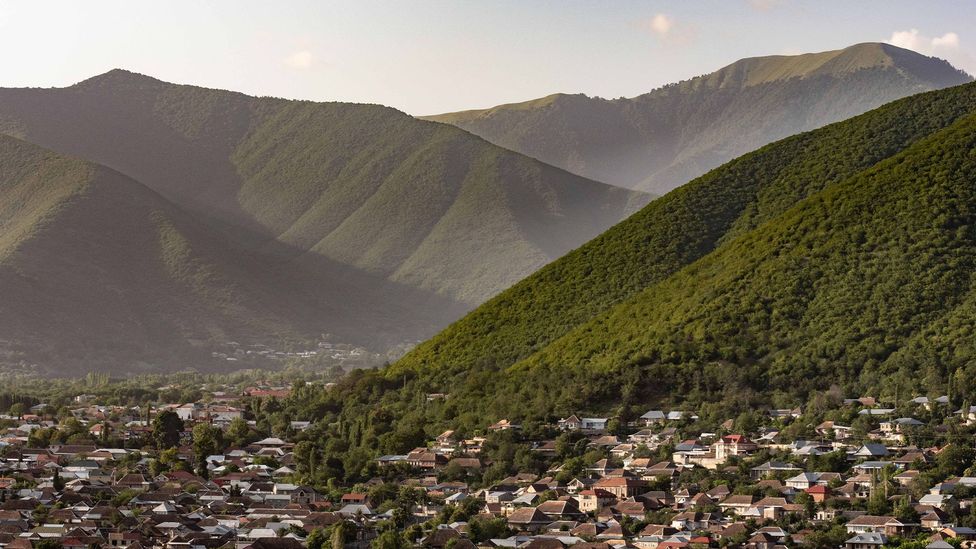
Sheki is surrounded by forests in the foothills of the Greater Caucasus mountains
The Sheki khans ruled this region of the Caucasus until 1819, and their flourishing political and trading empire was headquartered in a fortress complex embellished with gardens, fountains and marble water pools, said to resemble a kind of Caucasian Alhambra. The citadel's walls are still standing, but only one of the original 30 or so buildings inside remains: the UNESCO-inscribed Sheki Khan's Palace, a former summer residence and administrative building.
Designed to impress visiting dignitaries, the magnificent two-storey palace, with its vivid paintings of strutting peacocks and flower-breathing dragons, took two years to construct (the stonework originally held together with egg white) and a further eight to decorate. In the palace's rose garden, Gudratli introduced me to researcher Zamina Rasulava, who has spent more than 20 years studying its lavish ornamentation.
Leading me through one extravagant room after another, she highlighted the pomegranate as one of the most important recurring motifs.
"In Islam, which arrived [in Sheki] in the 8th Century, the pomegranate is the king of all paradise fruits because its calyx resembles a crown," she said. She went on to explain that for the Sheki khans, it also symbolised government. "The ruby-red seeds represent the people; the pith separates them into their different regions, cultures and ethnic groups. If they are brought together by good governance, then there is unity, which in turn bears rich fruit."
The palace's most distinctive feature is its vast shebeke (decorative windows made without glue or nails). Rasulava told me that each square metre consists of more than 5,000 pieces of wood and coloured glass, the latter brought along trade routes from Murano, near Venice, and exchanged for silkworms and cocoons.
"Sheki silkworms were in demand globally," Rasulava explained. "Not only in Italy, but Lyon (France's greatest silk centre), and even in silk's motherland, China, because they were more resilient in cold weather than any other."
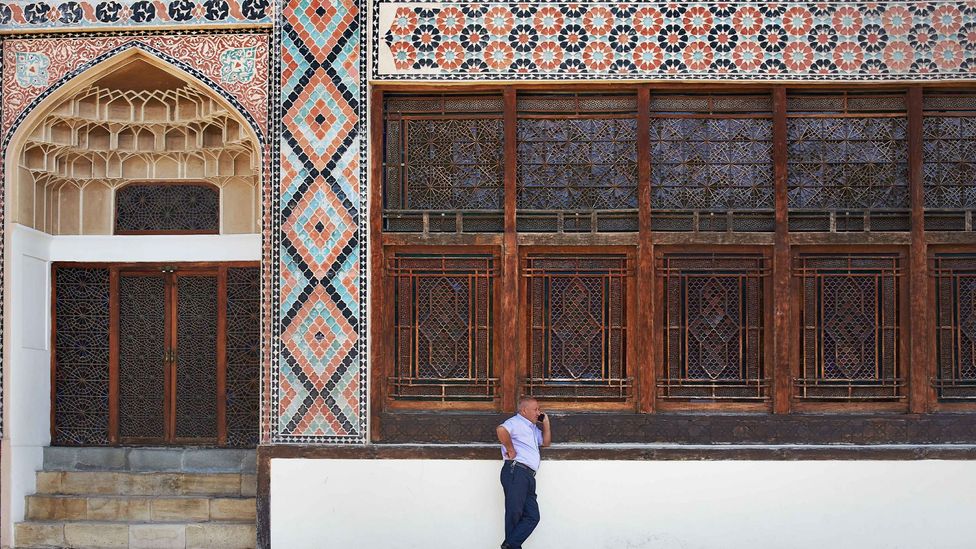
The gardens, pools and engravings of the Unesco-inscribed Khan's Palace are said to resemble a Caucasian Alhambra
As Sheki prospered, artisans from the region came to trade with the silk merchants, including carpet weavers, tekeldus (chain stitch) embroiderers, coppersmiths, potters, milliners and shoemakers. Sheki became renowned as a leading centre for the arts and crafts, a reputation it still holds to this day. Meanwhile, the boom in caravan traffic led to the building of five caravanserais, two of which have survived.
Public squares were constructed, along with hammams, major roads and the Khan Mosque, the city's first Friday mosque, known as a Juma. (Friday is the holiest day of the week for Muslims when they are obliged to attend a special noon service.)
The Khan Mosque is open to the public, and Gudratli had arranged for an audience with the current imam, Habil Khalilov, who greeted me by anointing me with gulab, a purifying rosewater. "Gulab represents the Prophet Muhammed," said Khalilov, while he dabbed my eyebrows with the heavily scented liquid. "The Prophet believed the eyebrows to be special because they are among the first hairs to appear on a baby and are therefore symbolic of new life."
Khalilov invited me to sit with him in the prayer hall, where he said non-believers were most welcome. "Even though more than 96% of the population of Azerbaijan is Muslim, it remains a secular country," he said. "You'll find many religions here; it's a uniquely tolerant and multicultural place."
He told me how the building was constructed between 1769-1770 from river stones, baked bricks, and pistachio, walnut and plane wood. It once featured its own ornate shebeke windows and was the main mosque in a city where each of the 32 historical neighbourhoods had its own dedicated place of worship.
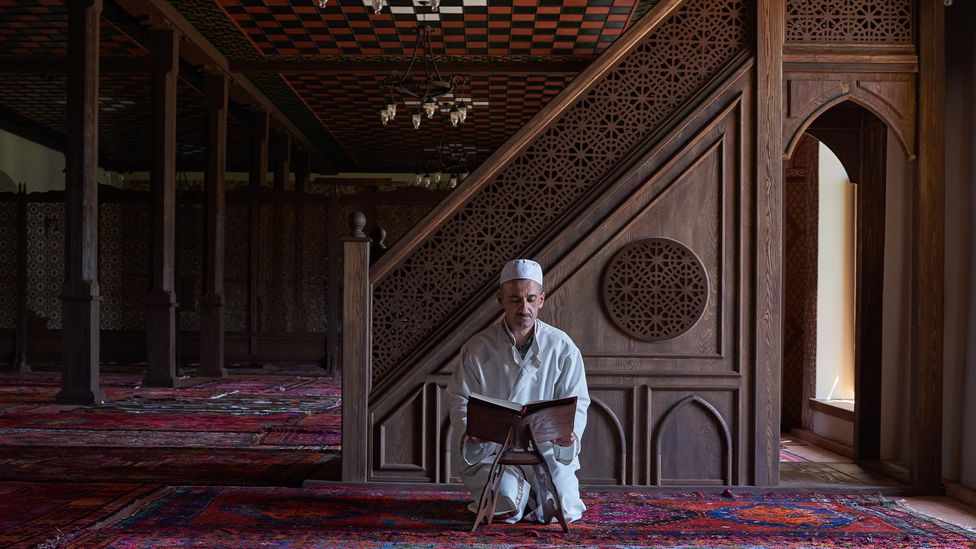
The Khan Mosque is open to the public and visitors may see Khalilov, the current imam, inside
"In ancient times, Sheki was known as 'Bala Istanbul', or Little Istanbul, because there were so many mosques," he said. "Just seven now remain; some were lost to earthquakes and mudslides, but the majority were destroyed when Russian Bolsheviks invaded and occupied Azerbaijan." Azerbaijan was a constituent republic of the USSR between 1922-1991, and atheism was the official doctrine.
As Khalilov excused himself to prepare for the lunchtime prayer, he touched his heart and lowered his head as a farewell, telling me that I should take time to explore Sheki's culinary traditions, many of which are intertwined with the ancient silk trade routes.
To sample some local dishes, Gudratli took me to Ilhama Tea House, where Shukufa Hamidova was making fresh compote (a drink traditionally served with every meal) in the kitchen from blackberries, geranium leaf and lots of sugar.
"Sheki people are known for their sweet tooth," she said. "We once used honey until sugarcane arrived from Persia. Nowadays it's something of an addiction; we love to eat bamya (fluted doughnut fingers), mindal (caramel-coated nuts) and halva (a spiced, hazelnut baklava). All that sugar is said to sweeten our mood too; we are famous for our good sense of humour."
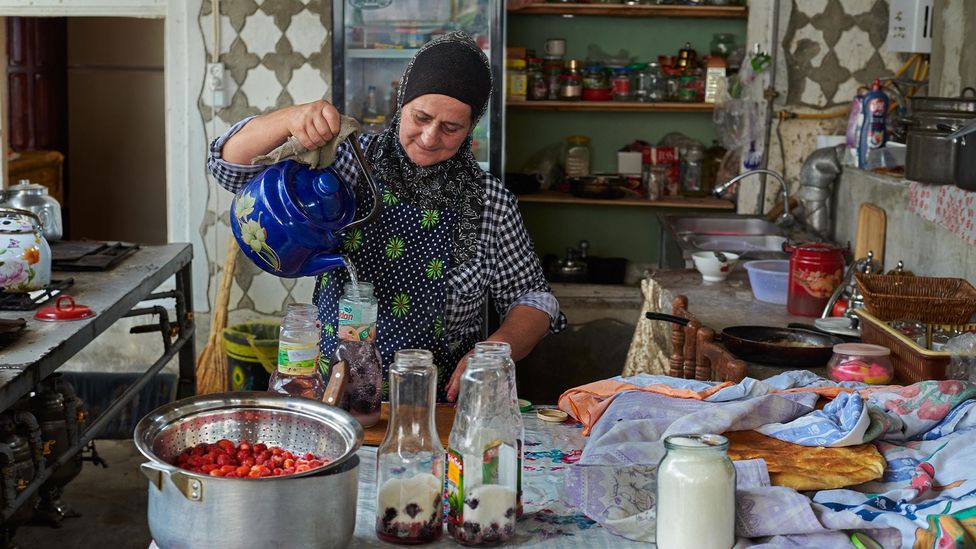
Hamidova welcomes visitors with fresh compote, a drink made from blackberries, geranium leaf and sugar
Another delicacy to arrive from Persia along the Silk Road was saffron, a key ingredient in piti, a local speciality and one of the nation's most popular dishes. Fellow cook Shahla Bashirova arrived at our table next with two dopu (clay pots) filled with the slow-cooked stew of lamb, chickpeas, saffron and lamb-tail fat. Unctuous and hearty, the name piti is said to be derived from an old Turkic word which means "the end of need to eat any more food".
"It was perfect to serve to the manual labourers who worked for the silk merchants and the khans," said Bashirova. "The combination of meat and carbohydrates gave them energy to work all day long on just one meal."
We finished lunch with black tea served in armudu (pear-shaped glasses). Gudratli showed me how to drink it local style by first dunking a sugar cube and sucking it before sipping the brew – a tradition thought to have been initiated by the khans.
Sweet tea also plays an important role in Azerbaijani wedding negotiations. Gudratli told me that in rural areas, if a girl's family serve tea without sugar to her potential parents-in-law, it's a sign that they do not want the marriage to proceed.
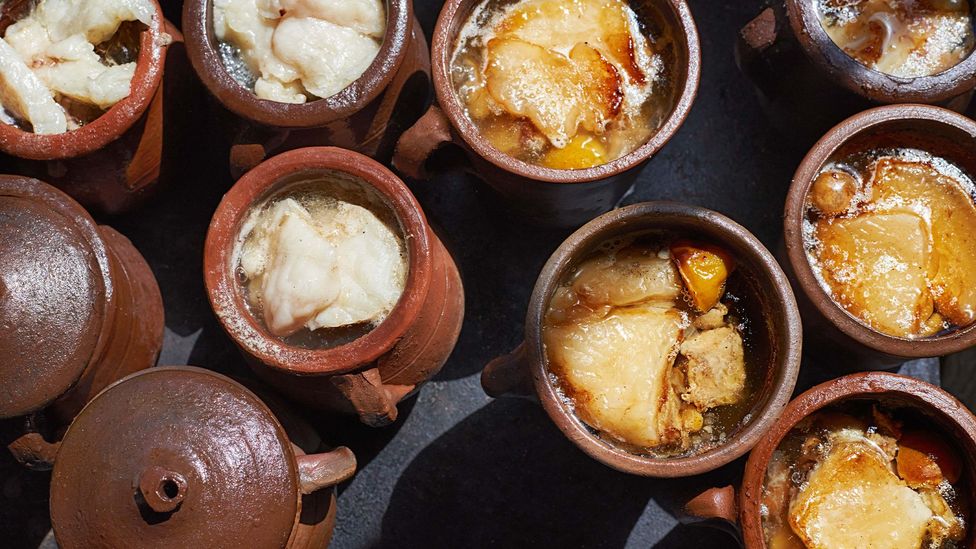
Piti is one of Azerbaijan's most popular dishes: a slow-cooked stew of lamb, chickpeas, saffron and lamb-tail fat served in clay pots
Keen to see what remained of the silk trade, we set off, driving past the last-remaining silk factory (which dates back to the Soviet era) to the workshop of Amiraslan Shamilov, an eighth-generation kelaghayi (decorated silk headscarf) maker, a handicraft inscribed on UNESCO's Intangible Cultural Heritage of Humanity list.
"It's a centuries-old artform that deserves recognition," said Shamilov, who was heating up pasab (an oily paste) in a cauldron when we arrived. "Kelaghayi are much more than a fashion item or a reflection of faith," he said. "They are part of our national identity."
Shamilov explained that they were once so important a woman could break up a street fight simply by taking off her headscarf and throwing it among the aggrieved parties, and that kelaghayi were also used as a kind of coded language. "Widows wore black; pregnant women wore green to let others know to take care around them, and single ladies wore rose-pink to let gentlemen know they were open to marriage."
As Shamilov began wood-stamping patterns on a rectangle of fabric, I asked him how he felt about running the last independent kelaghayi workshop in a city where there were once dozens.
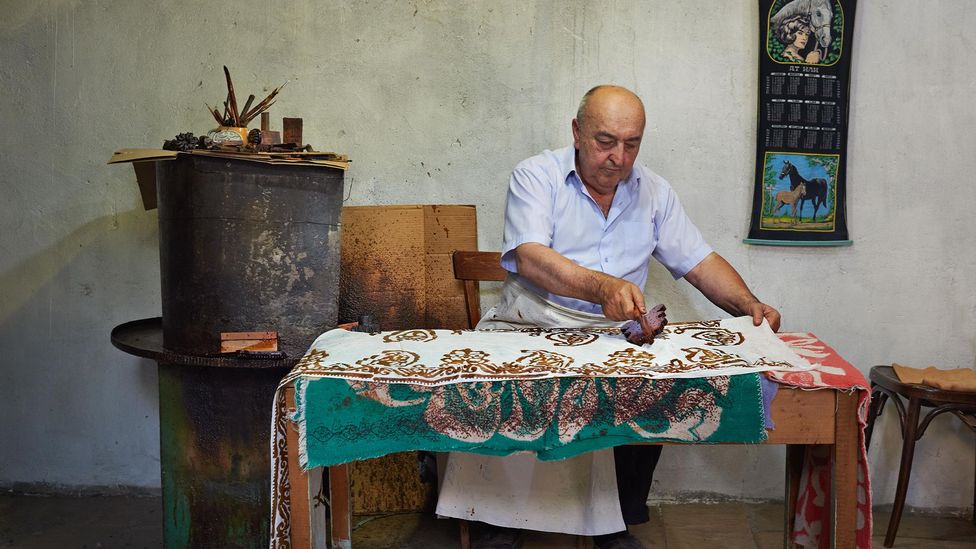
Today, Shamilov runs the last remaining independent kelaghayi shop in Sheki
"The silk trade has dwindled, but UNESCO's recognition of our handicrafts and buildings helps preserve them for the future," he said. "Besides, Sheki's reputation as Azerbaijan's cultural and culinary capital has brought an influx of travellers and different kinds of trades to the city. The old Silk Road has been replaced by a new one: global tourism."








